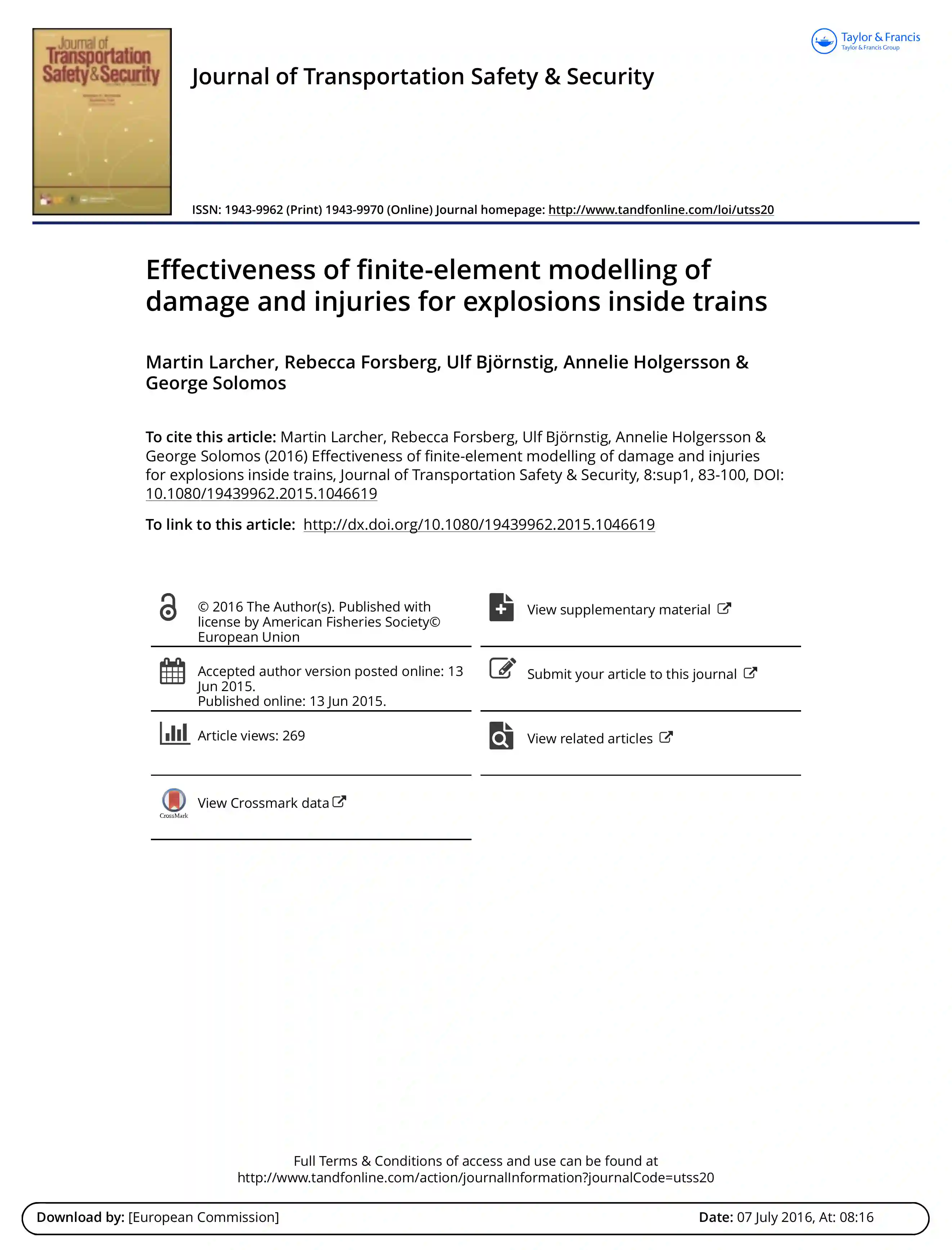
scientific article
Blast Load Analysis
2016
- Abstract
- The rail-bound sector has become a preferred target of terrorist attacks because of its vulnerability, and the most frequent way to carry out these attacks has been the use of explosive devices. The aim of this study is to investigate the effectiveness of modelling detonation effects inside train carriages using explicit finite element techniques. The numerical simulations consider fluid-structure interaction phenomena and several parametric studies are conducted. Carriage damage and injuries to the passengers are examined. Displacements in the model of the carriage structure do not vary greatly for small changes of the charge size, its location, or by open doors. Changing charge size, the location of the detonation, and door setting, however, had significant impact on the risk of eardrum rupture and fatality. Comparison of the simulation and real life data demonstrate a good agreement between the real and calculated displacements of the carriage, whereas the risk of death and eardrum rupture is slightly higher in the calculations. The model presented can reproduce a reliable actual situation if more parameters that influence injuries of blast waves were considered.
- Authors
- LARCHER Martin; FORSBERG Rebecca; BJOERNSTIG Ulf; HOLGERSSON Annelie; SOLOMOS George
- Year
- 2016
- Publisher
- TAYLOR & FRANCIS INC
- Citation
Larcher M; Forsberg R; Bjoernstig U; Holgersson A; Solomos G. Effectiveness of finite-element modelling of damage and injuries for explosions inside trains. JOURNAL OF TRANSPORTATION SAFETY AND SECURITY 8 (S1); 2016. p. 83-100. JRC89005 - Identifiers
JRC JRC89005 ISSN 1943-9962 DOI 10.1080/19439962.2015.1046619
Documents are published in the JRC Publications Repository and are protected by copyright,with all rights reserved, unless otherwise indicated.
Additional information:https://ec.europa.eu/info/legal-notice_en#copyright-notice
Additional information:https://ec.europa.eu/info/legal-notice_en#copyright-notice
